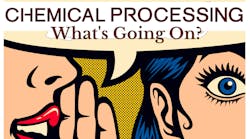January marks a significant juncture in the advance of open access publishing. It’s when a major initiative, cOAlition S, comes into full force. Launched in 2018 by a group of European and international organizations as well as charitable foundations that fund research and with the support of the European Commission and the European Research Council, the initiative aims to eliminate restrictions on access to articles that cover work underwritten by such funding.
“With effect from 2021, all scholarly publications on the results from research funded by public or private grants provided by national, regional or international research councils and funding bodies must be published in Open Access Journals, on Open Access Platforms, or made immediately available through Open Access Repositories without embargo,” mandates the group. (For more details on cOAlition S, see: www.coalition-s.org.)
The initiative arose from concerns that, while funding for much of the work covered in papers in academic journals comes from government bodies and charitable foundations whose aim is to make results widely and quickly available, the subscription-fee-based approach traditionally used by these journals thwarts broad access. Indeed, the high subscription prices of many journals have posed a significant burden on libraries and often limited the number of titles to which they can afford to subscribe. This also, of course, undermines ready access by individuals to papers they might find valuable.
Publishers of scholarly journals are responding. For instance, in late November, Springer Nature, New York City, which publishes an immense number of journals, including Nature, Nature Biotechnology, Nature Catalysis and a host of other titles related to chemistry and engineering, announced that authors now have an open access option.
However, open access will come at a steep price at Springer Nature. The publisher will charge authors $11,390 (€9,500) to provide open access to a paper in Nature and 32 other journals that rely on subscriptions and now keep most content behind paywalls (i.e., access requires paying a fee).
Interestingly, a news item on Nature.com about the option notes that the highest charge elsewhere is under $6,000 (≈€5,000) and cites several people in academia who call the fee too high. That piece also includes a response from the publisher on why it must charge more.
That news item says Springer Nature is exploring an approach that would about halve the open-access fees for some journals. Now in trials with Nature Physics, Nature Genetics and Nature Methods, it involves paying a non-refundable fee of ≈$2,600 (€2,190) to cover editorial assessment and peer review. Then, for any submission found suitable, the author pays an additional fee of ≈$3,100 (€2,600) for publication.
By the way, paywalls certainly don’t only afflict scholarly journals. Some trade magazines require an extra subscription fee to access their full content online. Rest assured that Chemical Processing never charges to make the complete text and graphics of our content available. However, for some online content such as our free webinars and special reports, we do ask for a bit of information, e.g., your name, email address and job title, which we consider reasonable and not burdensome.



